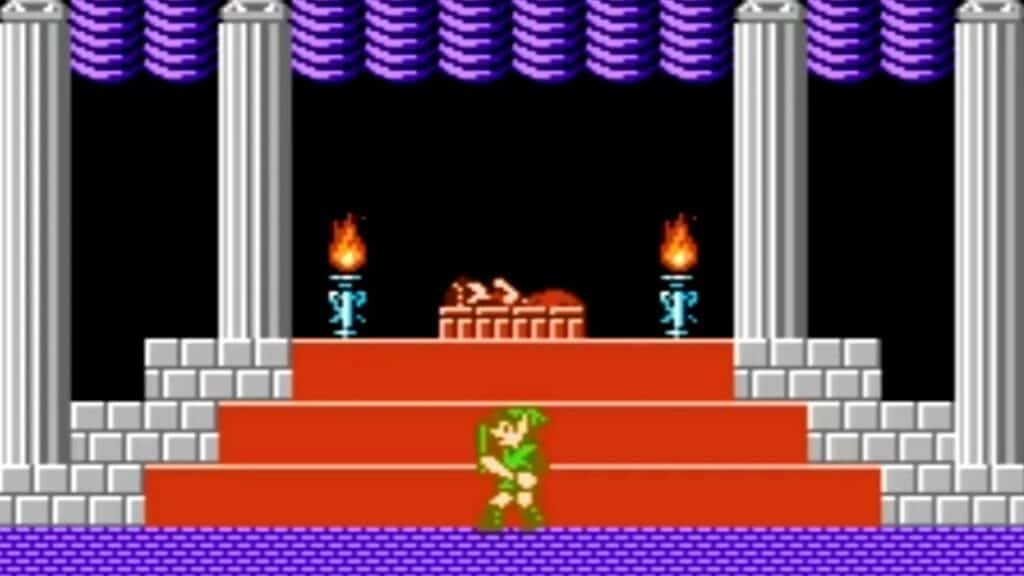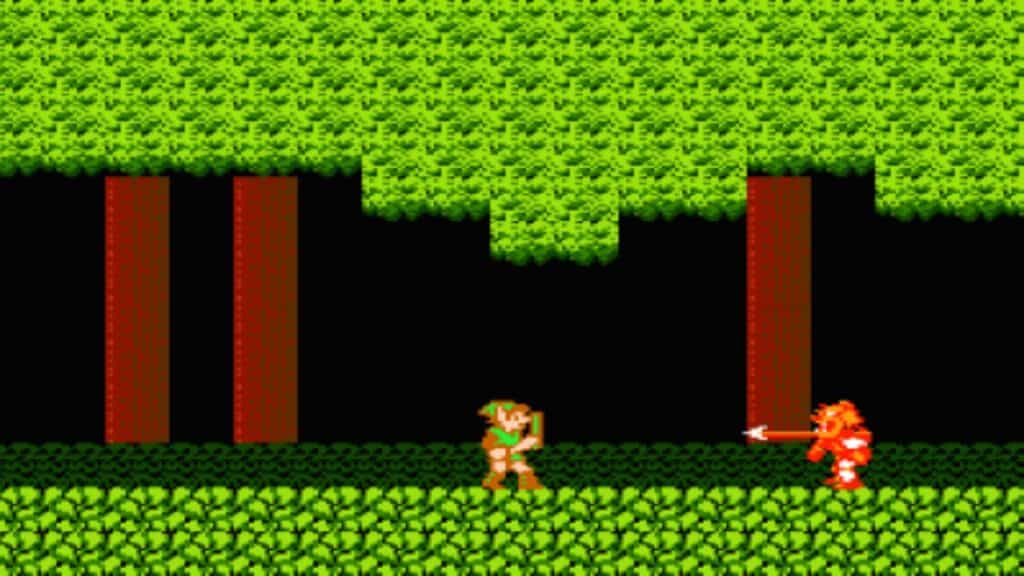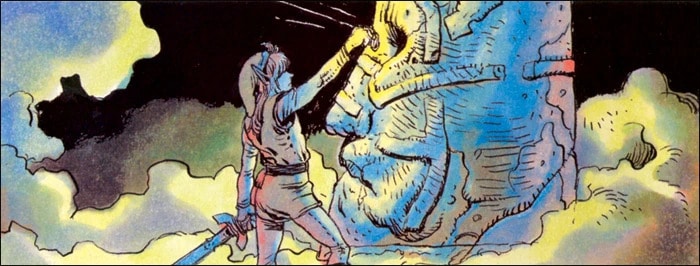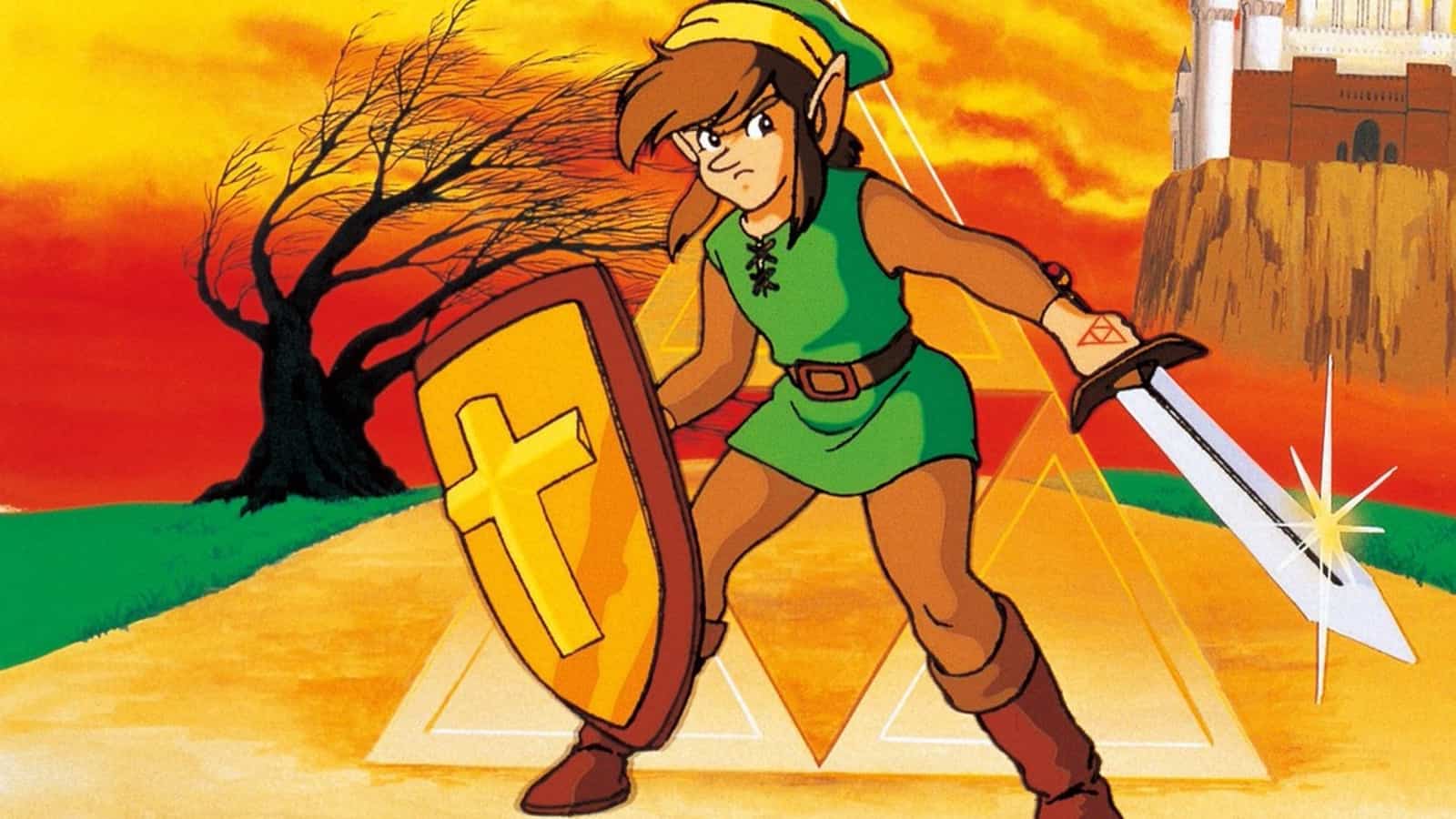Despite the game getting a bad rap as the proverbial “black sheep” of the franchise, Zelda II: The Adventure of Link actually brings a lot of compelling ideas to the table. For starters, the game sits alongside a roster of “who’s-who” NES sequels that would drastically alter their gameplay following a successful predecessor, and most (if not all) of these games are commendable for the risks that they take. Sure, Super Mario Bros. 2, Zelda II, and Castlevania II might veer off of the predetermined path that their predecessors tread, but in doing so they also help to establish some important lessons for each of their respective franchises and console games as a whole. The early days of the NES would be akin to the Wild West, and a great example of that is the way Zelda II handles leveling up.
Between the release of The Legend of Zelda and Zelda II, Japan would find itself in the midst of a full-blown obsession with a brand-new style of game. While at the time it didn’t necessarily have a name yet (and even years later, developers would admit that they simply knew them as RPGs), the intervening years between the first and second Zelda games would see the launch of both Dragon Quest and Final Fantasy, two games responsible for establishing the conventions of Japanese Role-Playing Games and console RPGs in general. Zelda II would end up borrowing quite a few ideas from both Dragon Quest and Final Fantasy to become one of the more purley action-RPG entries in the franchise, and one of the most obvious examples of this is the way the game handles Link’s character progression and power curve.
What Separates Zelda II From the Rest of the Series

Of course, Zelda II‘s implementation of RPG mechanics and affiliation with the action-RPG genre aren’t the only things that separate the game from the rest of the series, as the title throws a number of conventions out the window to stand alone in the franchise. First and foremost, Zelda II is the only side-scrolling game in the series, with players controlling Link from a traditional action-platrormer perspective rather than the top-down angle of The Legend of Zelda and A Link to the Past (and every other 2D Zelda game after it). Additionally, Link encounters enemies both within locations on the map and in the overworld, with the game introducing random battles on the world map akin to Dragon Quest or Final Fantasy.
Alongside the game’s inclusion of random battles are a plethora of other RPG elements that the title includes, such as villages and towns with NPCs for Link to talk to (something almost completely absent from the relatively solo-experience of the original game), side quests to complete, and a need to decipher clues from dialogue in order to figure out where to head next. Above all these elements, though, is the way that Zelda II handles Link’s character progression and growth, with the title implementing a traditional RPG experience-based system in favor of the more equipment-centric upgrades.
While other Zelda games improve Link’s arsenal, with new pieces of equipment expanding player expression and recontextualizing the world around him, Zelda II sees Link have most of his necessary equipment from the game’s outset, instead becoming more powerful by defeating enemies and gaining experience.
How Experience Works in Zelda II

Even though Zelda II borrows heavily from the RPGs of the time in its inclusion of an experience-based character progression model, the number of stats that experience accumulation impacts are far fewer than the games it takes inspiration from. As you might expect, Link gains experience primarily though defeating enemies, with more powerful enemies granting increasingly large experience rewards to collect. After earning a certain amount of experience, Link then gains levels across his three base stats. The stats that Link can improve are:
- Attack: Affects how much damage Link’s sword deals to enemies
- Magic: Affects how many Magic Containers Link uses when casting a Spell
- Life: Affects the amount of damage Link takes after being hit by enemies
Unlike in Dragon Quest or Final Fantasy, though, Link’s Magic Points and Hit Points (MP and HP) don’t increase with each level he gains. Instead, players still need to track down the various Heart Containers and Magic Containers residing in the hidden corners of Zelda II‘s version of Hyrule in order to improve both resource pools. Link will begin the game at Level 1 and start with 4 Heart and Magic Containers and base-level stats. After he gains a level (which happens automatically after reaching certain experience point totals), these stats gradually increase until Link reaches Level 8, at which point he gains a 1-Up Doll for each experience cap afterward.
In addition to collecting experience points from defeating enemies, Link will occasionally come across Point Bags or Experience Bags, which (as the name implies) are large drops of experience points for the player to collect that add a significant amount to their current total.
The Benefit of Palaces

Instead of Dungeons, each of the main areas in Zelda II go by the moniker of Palaces. Even though these locations are functionally the same as Dungeons in The Legend of Zelda, the game chooses to call them by a different name. Regardless, Link will need to venture across Hyrule and clear out Palaces as part of the game’s main adventure, and it’s within the Palaces that players will receive the most significant boosts to their experience totals.
After clearing out each Palace’s guardian, Link will be able to place a Crystal within the statue residing in the Palace’s final room. Placing one of these Crystals will see his experience total automatically increase to the next cap, resulting in an instantaneous level up. The stat that increases with the level depends on how many experience points the player already has and what the previous stat leveling up was, as Link gains points in each of his stats using a predetermined order. Unlike most RPGs of the time (or since), stat bonuses at level-up are not random but instead on a fixed path.
In addition to the bonus that placing a Crystal grants Link, Palaces are also great places to earn experience points from defeating enemies as each room will have plenty of foes for Link to defeat, including some very challenging ones that provide significant experience rewards.
Level Cap and Experience Tables
Link will start Zelda II with 4 Heart Containers and 4 Magic Containers along with all three of his stats at their base level (1). After hitting certain experience point totals, Link will gain a level in each of his stats in a set order, up to a max level of 8. Interestingly, Link will also end up with a total of 8 Magic Containers and 8 Heart Containers if the player collects all of the additional ones hidden throughout Hyrule. The table below displays the experience point totals necessary for each stat and level increase:
| Level | Life | Magic | Attack |
|---|---|---|---|
| 1 | Base Level | Base Level | Base Level |
| 2 | 50 | 100 | 200 |
| 3 | 150 | 300 | 500 |
| 4 | 400 | 700 | 1000 |
| 5 | 800 | 1200 | 2000 |
| 6 | 1500 | 2200 | 3000 |
| 7 | 2500 | 3500 | 5000 |
| 8 | 4000 | 6000 | 8000 |
Note how Link will gain levels in his Life and Magic stats before leveling up Attack, with the Attack stat taking the longest to reach the Level 8 cap and needing 8000 total experience points. Even though players will develop Link on a predetermined path of character progression, the totals themselves result in players reaching higher levels in both the Life and Magic stats before upgrading Attack. After reaching the max level of 8 in each of Link’s stats, the player will earn a Link Doll or 1-Up Doll for every additional 9000 experience points they collect.
Final Tips
Zelda II‘s leveling up and character progression are unique among the Zelda series, but they actually fall in line with most other action-RPGs and RPGs despite some interesting quirks. That said, there are a few final tips to keep in mind regarding how experience works in Zelda II:
- Some enemies in the game can actually subtract from Link’s current experience point total every time they land a successful attack on the hero. Moas, Maus, Ras, and Wosu enemy types will damage Link for both health and experience, taking away points from any amount Link collects toward the next level-up threshold.
- Link can’t just die over and over again without consequence, as Zelda II is the only game in the series to introduce a life counter. Whenever Link runs out of lives, all of the experience that the player has resets back to zero.
- Similarly, saving and turning the game off will see any unused experience (that is, any experience the player collects toward reaching the next level up threshold) completely erased. As an example, if the player has 499 experience and is one point away from leveling up Attack to Level 3, turning off the game will see the total reset back to the last total necessary for leveling up a stat (in this case, 400 to bring Life to Level 4).
The image featured at the top of this post is ©Zelda character artwork.
